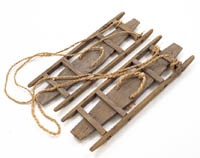The earliest geta clogs in Japan were excavated from the remains of ancient paddy fields of the Late Yayoi period, they would have been practical for farmers, preventing their feet from sinking into the mud. The rice-field geta remained practically unchanged and in use till recently. Called tageta (ricefield-geta) had been found, renji-geta 連歯下駄 have also been on site of Nara period Heijô palace. (source: Japan Footwear Museum). During Heian period, they were called ashida 足駄, during Muromachi period : bokuri 木履, and since Edo period : geta.
The origin of the earliest geta clogs, so closely associated with Japanese culture, has been traced back to to the Wenchang County of Hainan Province in southern China, there has always been a custom to wear the geta-like clogs.
Here, like in Japan although modern footwear are replacing the clogs, you can still see many people wearing clogs, whether in countryside or town. Geta are worn in Japan as part of the traditional cultural gear together with kimonos, whilst in China, they have retained their original functional uses.
“Legend has it that in the Spring and Autumn Period (770-476BC), Jie Zitui, a nobleman of the Jin Kingdom, once got exiled together with the Jin King, Jin Wengong, to another kingdom. After his return, Jie Zitui lived in seclusion in Mianshang Mountain (now southeast of Gongxiu County, Shangxi Province), and declined Jin Wengong’s repeated invitations. Later, the military people ordered by the king to summon Jie Zitui attempted to force him out by burning the mountain where he lived, but Jie Zitui died holding a tree. Jin Wengong lamented Jie Zitui so much that he used wood of this tree to make Clogs, and whenever he put them on, he would think of Jie Zitui.
Wenchang Clogs has a centuries-old history. At first, its shape was very similar to a tiny wooden stool and the upper was added onto it. Since only a small area of Wenchang Clogs contacts the ground, they are suitable for walking on muddy road or in rainy days, and it is not easy for people to slip down.” – Clogs of Wenchang, Hainan – the forefather of the Japanese geta

Ninja geta, part of the mizugumo (water-spider) getup for walking on water. Source: “Geta Wooden Clogs, Mizugumo” Web Japan
In Japan, geta developed further uses, for eg., the above variant geta invented for walking on water, formed part of the “mizugumo” gear of the ninja for said to be useful for getting across castle moats(Ninjtsu Enclopedia). A plate is attached to the back of each clog. The plates open and close so that the “ninja” wearing them can advance more quickly on the water surface.
Further reading:
Traditional footwear (Nipponia website)

